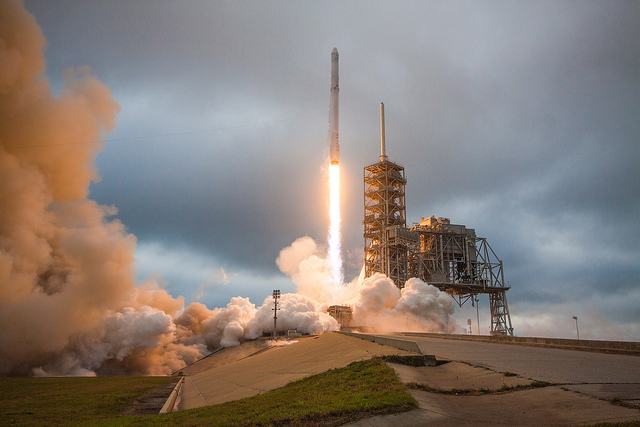
Here’s two articles that stretch the brain:
- United Arab Emirates has a goal to establish an inhabited settlement on Mars by 2117 – Such an idea is no longer ridiculous. Ten years ago it would have been foolish; today, it is quite plausible.
- A concept of how the moon could be occupied within four years – this is also not a silly idea anymore.
2/20 – Leonard David’s Inside Outer Space – UAE’s March to Mars – The United Arab Emirates plans to have an inhabited settlement on Mars by 2117.
In all seriousness, I say go for it!
They are recruiting a cadre of research scientists for an international team. They plan to launch an orbiter to study the planet more closely. They want to develop a faster transport system. They are already designing a city, which will be robot-built, presumably to be near-inhabitable by the time humans arrive.
Very cool. Not that my opinion carries any weight, but please, full steam ahead! I am dead serious. The more competitors in the race to inhabit the moon or Mars, the better everyone else will perform.
My only challenge is that considering how fast space technology is developing, why does UAE think it will take so long?
2/22 – Howard Bloom at Scientific American – How to Get Back to the Moon in 4 Years – This Time to Stay – Author suggests a way to get to the moon, land there, and inhabit it, at lower cost and faster than NASA currently plans to do.
Downside of the current plan from NASA? The Space Launch System lift vehicle is too expensive to fly and will take a long time to even get the first two launches. The Orion capsule isn’t close to being ready to carry humans. Finally, the SLS and Orion will not be capable of actually, you know, landing on the moon. Much to my surprise Orion will not be able to even land.
So NASA’s plan is to orbit the moon. Merely repeat the accomplishment of Apollo 8 in December 1968.
The author’s suggestion? To quote:
Turn to private industry. Turn to two companies in particular—Elon Musk’s SpaceX and Robert Bigelow’s Bigelow Aerospace.
First, SpaceX. The Falcon 9 has a proven track record, as does the Dragon capsule. The Falcon Heavy will fly this year, based on what I’ve read. The Dragon 2 capsule will be able to carry 7 passengers. Off the top of my head (without research), I think the Falcon Heavy and Dragon 2 will have been flying for years before SLS and Orion have their second test launch.
Second, Bigelow Aerospace owns and is further developing inflatable space housing units. Since early 2016, a Bigelow inflatable unit has been attached to the ISS, providing a spare room there. The company is developing a new unit for deployment on the moon. Put three of them together and you have 3 x 330 cubic meter living space. That would be 11,654 cubic feet times three, or about 35,000 cubic feet of habitation. As a really rough ballpark estimate, that is somewhere in the range of over twice the space in the house where I live.
How could we fund a full-steam-ahead effort for SpaceX, Bigelow, and even Jeff Bezo’s Blue Origin?
Dump SLS and Orion.
That would free up $3 billion a year.
The SLS program is costing $3,000,000,000. Every year. Which we are now spending on a system that is years away from being ready.
Sounds like an incredibly wonderful plan.